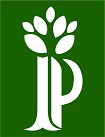
Comparative survey of profitability, production and sustainability between organic and conventional farming (case study on corn, rice and tomato farmers in Minahasa)
Fadly Steven Jefry Rumondor(1*)
(1) Universitas Kristen Indonesia Tomohon
(*) Corresponding Author
Abstract
This study aimed to bridge the knowledge gap by comparing productivity (yield), profitability (profit margin per hectare), and sustainability index between organic and conventional systems. This study applied a comparative observational design with two treatment groups: organic and conventional farming. Population observed in this study was farmers cultivating rice, corn, and tomatoes in the study area. Sampling was carried out using stratified random sampling based on crop type, ensuring balanced representation across the two farming systems. The sample size was 100 plots per system, resulting in 200 plots. Assumptions of normality and homogeneity of variances were tested using the Shapiro–Wilk and Levene's tests, respectively. Independent samples t-tests were conducted at α = 0.05 to compare yield, profit margin, and sustainability index between systems. A two-way ANOVA was performed if a system × crop interaction was significant. Power Analysis via Monte Carlo Simulation was performed to ensure the study has sufficient statistical power (≥ 0.80) to detect the expected differences in yield, profit margin, and sustainability index between organic and conventional systems. Organic farming demonstrates robust advantages in profit and sustainability, with promising but variable impacts on yield. Researchers and policymakers should prioritize adequately powered studies when comparing agronomic performance to ensure that subtle yield effects are not overlooked.
Keywords
Full Text:
PDFReferences
Alengebawy, A., Abdelkhalek, S. T., Qureshi, S. R., & Wang, M. Q. (2021). Heavy metals and pesticides toxicity in agricultural soil and plants: Ecological risks and human health implications. In Toxics (Vol. 9, Issue 3, pp. 1–34). MDPI AG. https://doi.org/10.3390/toxics9030042
Çakmakçı, R., Salık, M. A., & Çakmakçı, S. (2023). Assessment and Principles of Environmentally Sustainable Food and Agriculture Systems. Agriculture (Switzerland), 13(5), 1–27. https://doi.org/10.3390/agriculture13051073
Durham, T. C., & Mizik, T. (2021). Comparative Economics of Conventional, Organic, and Alternative Agricultural Production Systems. https://doi.org/10.3390/economies
Francaviglia, R., Almagro, M., & Vicente-Vicente, J. L. (2023). Conservation Agriculture and Soil Organic Carbon: Principles, Processes, Practices and Policy Options. Soil Systems, 7(1). https://doi.org/10.3390/soilsystems7010017
Gupta, A., Singh, U. B., Sahu, P. K., Paul, S., Kumar, A., Malviya, D., Singh, S., Kuppusamy, P., Singh, P., Paul, D., Rai, J. P., Singh, H. V., Manna, M. C., Crusberg, T. C., Kumar, A., & Saxena, A. K. (2022). Linking Soil Microbial Diversity to Modern Agriculture Practices: A Review. International Journal of Environmental Research and Public Health, 19(5). https://doi.org/10.3390/ijerph19053141
Kaunang, R., Taroreh, M. L. G., Ngangi, C. R., & Mukhlis, M. (2024). Analysis of Coconut Agribusiness Development Strategy in North Minahasa Regency. Jurnal Penelitian Pendidikan IPA, 10(7), 4212–4219. https://doi.org/10.29303/jppipa.v10i7.8500
Levkina, R., & Petrenko, A. (2020). Agricultural and Resource Economics: International Scientific E-Journal www.are.com.ua. Agricultural and Resource Economics: International Scientific E-Journal, 7(2), 102–118.
Liu, Q., & Wang, L. (2021). t-Test and ANOVA for data with ceiling and/or floor effects. Behavior Research Methods, 53(1), 264–277. https://doi.org/10.3758/s13428-020-01407-2
Nemecek, T., Roesch, A., Bystricky, M., Jeanneret, P., Lansche, J., Stüssi, M., & Gaillard, G. (2024). Swiss Agricultural Life Cycle Assessment: A method to assess the emissions and environmental impacts of agricultural systems and products. International Journal of Life Cycle Assessment, 29(3), 433–455. https://doi.org/10.1007/s11367-023-02255-w
Nguyen, P. H., Herring, A. H., & Engel, S. M. (2024). Power Analysis of Exposure Mixture Studies Via Monte Carlo Simulations. Statistics in Biosciences, 16(2), 321–346. https://doi.org/10.1007/s12561-023-09385-7
Parven, A., Meftaul, I. M., Venkateswarlu, K., & Megharaj, M. (2024). Herbicides in modern sustainable agriculture: environmental fate, ecological implications, and human health concerns. International Journal of Environmental Science and Technology, 22(2), 1181–1202. https://doi.org/10.1007/s13762-024-05818-y
Polcyn, J., Stratan, A., & Lopotenco, V. (2023). Sustainable Agriculture’s Contribution to Quality of Life. Sustainability (Switzerland), 15(23). https://doi.org/10.3390/su152316415
Sapbamrer, R., & Thammachai, A. (2021). A systematic review of factors influencing farmers’ adoption of organic farming. Sustainability (Switzerland), 13(7). https://doi.org/10.3390/su13073842
Smith, O. M., Cohen, A. L., Reganold, J. P., Jones, M. S., Orpet, R. J., Taylor, J. M., Thurman, J. H., Cornell, K. A., Olsson, R. L., Ge, Y., Kennedy, C. M., & Crowder, D. W. (2020). Landscape context affects the sustainability of organic farming systems. Proceedings of the National Academy of Sciences of the United States of America, 117(6), 2870–2878. https://doi.org/10.1073/pnas.1906909117
Sondakh, D. S. I., Tulungen, F. R., Kampilong, J. K., Rumondor, F. S. J., & Kawuwung, Y. S. (2023). Greenhouse Gas Profiling to Increase Agricultural Mitigation Program Effectiveness in Indonesia. Chemical Engineering Transactions, 107(October), 715–720. https://doi.org/10.3303/CET23107120
Sujianto, Gunawan, E., Saptana, Syahyuti, Darwis, V., Ashari, Syukur, M., Ariningsih, E., Saliem, H. P., Mardianto, S., & Marhendro. (2022). Farmers’ perception, awareness, and constraints of organic rice farming in Indonesia. Open Agriculture, 7(1), 284–299. https://doi.org/10.1515/opag-2022-0090
Susilowati, henry. (2022). The rationality of the Price Range of Urea and NPK Fertilizers in Rice Farming. Analisis Kebijakan Pertanian, 20(2), 173–191. http://dx.doi.org/10.21082/akp.v20n2.2022.173-191
Tectona, I. C., Chawa, A. F., & Hidayati, B. (2025). Philosophical Capital and Sustainable Livelihoods: A Comprehensive Analysis of Small-Scale Polyculture Fisheries in Medan, Indonesia. International Journal of Environmental Impacts, 8(3), 583–596. https://doi.org/10.18280/ijei.080316
Tian, M., Zheng, Y., Sun, X., & Zheng, H. (2022). A research on promoting chemical fertiliser reduction for sustainable agriculture purposes: Evolutionary game analyses involving ‘government, farmers, and consumers.’ Ecological Indicators, 144(June). https://doi.org/10.1016/j.ecolind.2022.109433
Tulungen, F. R. (2025). INCREASING COMPETITIVE ADVANTAGE OF TOMATO FARMING BASED ON COST STRUCTURE WITH BUSINESS INTELLIGENCE APPROACH IN. 9(2), 632–641.
Widiyanti, E., Karsidi, R., Wijaya, M., & Utari, P. (2023). How intergenerational farmers negotiate their identity in the era of Agriculture 4.0: A multiple-case study in Indonesia. Open Agriculture, 8(1), 1–18. https://doi.org/10.1515/opag-2022-0219
Zou, Y., Liu, Z., Chen, Y., Wang, Y., & Feng, S. (2024). Crop Rotation and Diversification in China: Enhancing Sustainable Agriculture and Resilience. Agriculture, 14(9), 1465. https://doi.org/10.3390/agriculture14091465
Article Metrics
Refbacks
- There are currently no refbacks.
Ilmu Pertanian (Agricultural Science) ISSN 0126-4214 (print), ISSN 2527-7162 (online) is published by Faculty of Agriculture Universitas Gadjah Mada collaboration with Perhimpunan Sarjana Pertanian Indonesia (PISPI) and licensed under a Creative Commons Attribution-ShareAlike 4.0 International License.











_2025_-_kecil_.png)
_2024_kecil_2.png)
